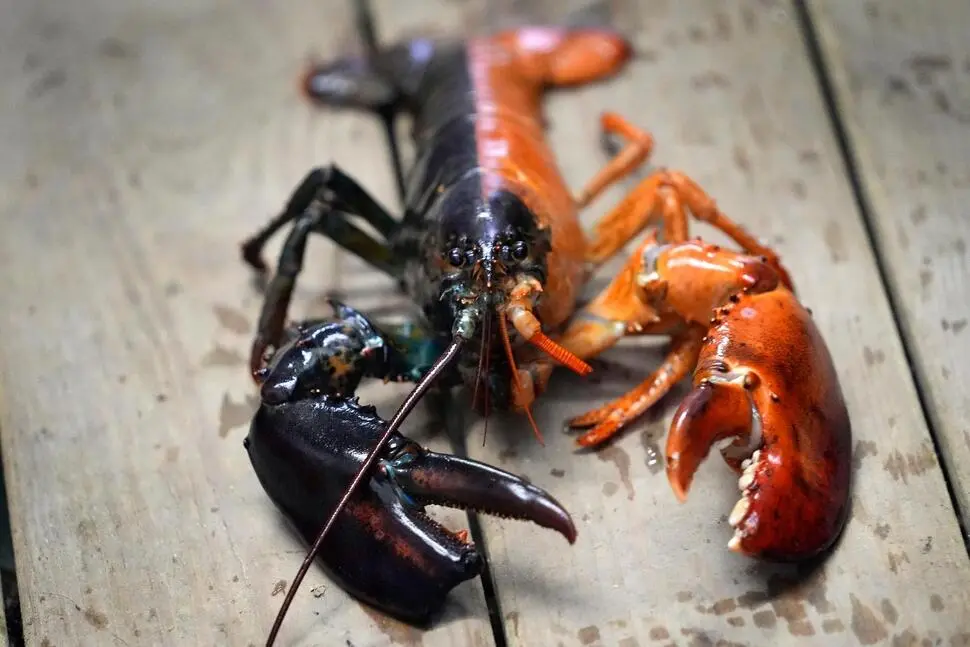BIDDEFORD, Maine (AP) — Lobsters in shades of orange, blue, calico, two-toned, and even “cotton-candy” colored have been showing up in traps, seafood tanks, and labs across the country. These unusually hued lobsters, especially the rare baby blue variety, often spark headlines for their scarcity, with some being estimated as rare as 1 in 100 million.
Recently, a surge of these vibrantly colored crustaceans in places like Maine, New York, and Colorado has left scientists questioning just how uncommon these discolored lobsters truly are. However, determining their rarity isn’t straightforward.
According to Andrew Goode, lead administrative scientist for the American Lobster Settlement Index at the University of Maine, lobsters’ colors vary due to genetic and dietary factors. He emphasized that estimates regarding their rarity should be viewed skeptically since there’s no definitive source tracking abnormal lobster colors.
“Anecdotally, they don’t taste any different either,” Goode remarked.
Typically, lobsters appear mottled brown in the wild and turn orange-red when boiled. Color abnormalities are linked to genetic mutations affecting the proteins that bind pigments in their shells, Goode explained.
Most estimates about unusual lobster colors stem from fisheries data, according to Markus Frederich, a marine sciences professor at the University of New England in Maine. However, the exact frequency of these rare colors remains elusive. Frederich and his students are now working to improve this data by developing noninvasive methods to extract genetic samples and study the molecular basis for rare shell colors. His research includes a collection of unusually colored lobsters, including offspring from an orange lobster named Peaches.
Peaches had thousands of babies this year, and about half turned out orange, an unusual occurrence. Frederich hopes studying the DNA of these lobsters will unlock a better understanding of the genetics behind their rare colors.
“Lobsters are iconic animals here in Maine, and I find them beautiful. When you see those rare ones, they look spectacular,” Frederich said. “The scientist in me wants to know how that works. What’s the mechanism?”
Frederich’s lab includes a unique lobster named Tamarind, whose shell is half-orange and half the typical color. This phenomenon, caused by two fused lobster eggs developing into one animal, is believed to be as rare as 1 in 50 million.
Odd-colored lobsters have been making headlines, such as an orange lobster found in a Stop & Shop on Long Island, New York, and another that showed up at a Red Lobster in Colorado. These rare lobsters are expected to keep appearing due to the vast size of the U.S. lobster fishery.
Richard Wahle, a retired lobster researcher from the University of Maine, noted that with U.S. fishers catching more than 90 million pounds of lobster annually since 2009, it’s no surprise that some unusual ones make an appearance. “In a catch consisting of hundreds of millions of lobsters, it shouldn’t be shocking that a few weird ones pop up every year, even if they’re 1 in a million or 1 in 30 million,” Wahle said.
